Healthcare as it was
Early Epidemics
Cholera
A few short years after coming into existence, the settlement at the mouth of the Sixteen (that was to become Oakville), suffered its first serious healthcare crisis: an epidemic of Asiatic Cholera.
The cholera arrived by ship along with immigrants from Britain, where the disease had spread from Europe. Conditions on those ships were horrendous in terms of crowding and sanitation, and food supplies (provided by the immigrants themselves) rarely lasted the two-month voyage. Conditions were ripe for the spread of disease and the immigrants, wasted by starvation, died by the hundreds.
Boards of Heath were established at every landing place for ships, and in June 1832 Oakville's Board appointed Dr. Daniel Black as Health Inspector for all immigrant-carrying vessels arriving at Oakville and Burlington Bay. In August 1833 Dr. Black was dead of cholera.
Typhus, Diptheria and Malaria
Oakville suffered other epidemics that periodically swept the country. After the scourge of cholera in the thirties, came typhus in 1847, carried by immigrants trying to escape the wretchedness caused by the Industrial Revolution and the potato famine in Ireland, and in 1854 cholera returned again.
Apart from the periodic country-wide epidemics, other diseases took their toll. The burial registers of Oakville churches show that infant mortality was very high, particularly among children under two years of age. “Malignant throat”, which we know to be diphtheria, in a few days wiped out a family of six between the ages of 2 months and 19 years.
The fever known as “ague” and “malaria”, which was the scourge of early settlers in Canada, was very prevalent in Oakville. Ague was associated with swamps and marshes, although it was not then known to be carried by mosquitoes. Since no screening was used it was just as well that night air was believed injurious and all outside air best left outside.
Justus W. Williams operated a store at Colbourn Street: the location is now known as 266 Lakeshore Road East. The store offered "a general assortment of dry goods and hardware, also a few groceries and medicines". He inscribed in his shop ledger (1830-36) his remedies for Ague, colds, Scarlet Fever, bowel complaints of every kind, etc. He also produced a transcription (slipperyjohn bark = elm bark).
Smallpox
Mrs. McCleary gives us this account of her father’s part in the serious smallpox epidemic of 1907:
“Father was the one who recognized the first case as being smallpox and soon it had spread all over town. He had a ‘camp’ set up on the west side of the river, on the lakefront near Holyrood, and everyone who developed the disease had to be taken there until they were better. The patients were picked up one by one and driven through town by horse and wagon (resembling a ‘lumber-wagon’) to the camp, where they were looked after. When people way one of these wagons, they know it was a case of smallpox and took care not to go near. I do not know how many contracted the disease, nor how long the camp was necessary, because Father decided to take the precaution of sending me away, and I was out of Oakville when the epidemic was at its worst.”
Early Oakville Doctors
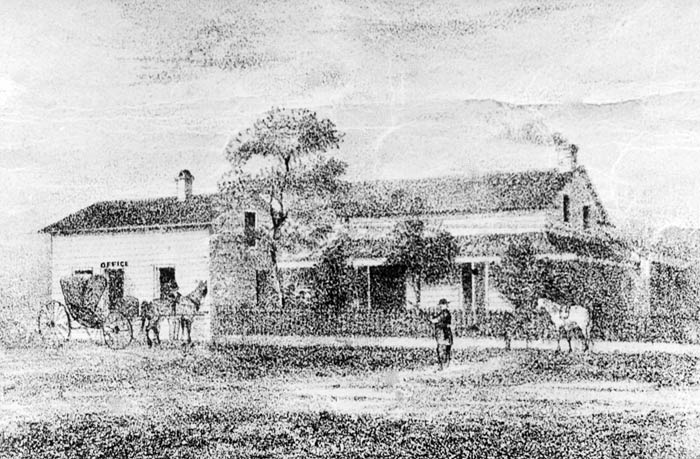
In the early years in Oakville the doctors were hardy, caring individuals who often had to ride for long distances over rough terrain, in all kinds of weather, to see a patient. One of the town's first doctors was Dr. William Gunn, a Scotsman who set up practice in the early 1840s. By the early 1850s, the town had five physicians who practised from their "doctor shops", which were usually in their homes.
Some early doctors
1830-1840
Dr. Daniel Black , Dr. William Kirkwood, Dr. William Gunn, Dr. Christopher Flock, Dr. David Dolmage Wright
1850s
Dr .Edwy Ogden - also Dentist, Dr. James Johnson
1860s
Dr. Anson Buck - Palermo, Dr. Van Norman - Bronte
1870-1880.
Dr. John Urquhart (See more below), Dr. Justus Samuel Williams, Dr. Charles Lusk
1900s.
Dr. Robert O. Fisher, Dr. John H. Stead, Dr. Fred Sparling, Dr. Morely Wilkinson
1915
Dr. Charles Page, Dr. Eric Soanes - Helped establish the first temporary hospital on First Street as well as the Oakville Trafalgar Memorial Hospital
1920-1930.
Dr. Chesley Oak, Dr. Brock Chisholm - First Director-General of the World Health Organization (WHO) from 1948 - 1953 - Deputy Minister of Health for Canada (1944-1946 - More information about Dr. Chisholm

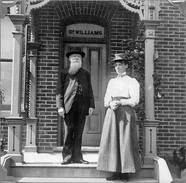
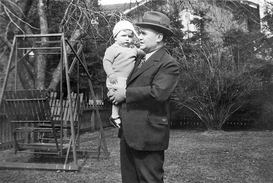

Dr. John Urquhart
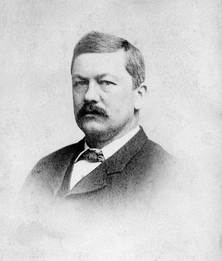
During the early 1800s John Urquhart arrived in Oakville from Scotland via New York. He was put in charge of a new hospital set up on the west side of the Sixteen and, after two years amongst cholera victims both at York and Oakville, he was considered qualified to practice medicine. He remained in Oakville when the epidemic subsided and built a combined apothecary's shop, surgery, and dwelling to which he gave the name "Medical Hall", a popular term during this period. In 1991, the building was designated as being of historical significance. This building still stands as 182 Lakeshore Road East and here his son, also named John who was to become an apothecary and then doctor, was born in 1844.
Young John Urquhart had preferred the life of a sailor; and in 1860, at the age of sixteen, ran away from home to go on the lakes. But before John Urquhart senior died in 1867 (“a very large funeral – twenty-six teams”, observed George Sumner) he had the satisfaction of knowing that young John had bowed to his parents’ wishes and entered upon a medical career. "Young John's" first instructor was Dr. John Rolph, a supporter of Mackenzie during the Rebellion. John Urquhart graduated with honours from the University of Toronto and returned to practice at Oakville for a time before going to Edinburgh for a post-graduate course.
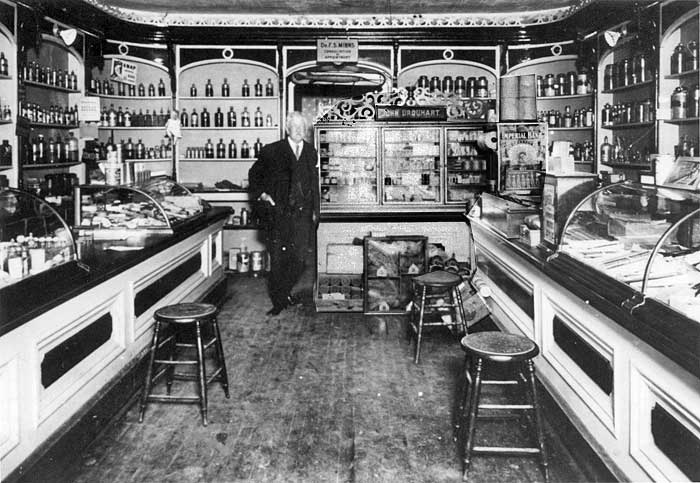
When he died at the age of ninety, in the house where he was born, Dr. John Urquhart was reputedly the oldest practicing physician in the province. Urquhart’s and Gulledge’s were the oldest concerns in the town when, within a few years of each other, they were discontinued. The chemist’s shop had done business for just onto a century, and the harness shop for 104 years.
Early Healthcare Facilities
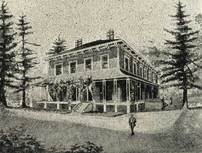
The Romain House, built in 1855 by William Romain as a single family residence, played an interesting role in Oakville's history, including its health care past. The home stood on a large plot of land between First and Allan streets stretching from Lakeshore Road to the lake. In 1870 the house was sold to the Turner family, and after 22 years as their family residence it was sold, remodelled and in 1892 became Lakehurst Sanitarium for several years (until 1905).
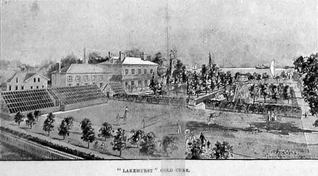
"The Ontario Double Chloride of Gold Cure company has leased for a term of years the charming home at Oakville of ex-Ald. Turner of Toronto, and the wisdom of the choice cannot be questioned. The grounds comprise six acres of wood, lawn, garden and conservatories, and the whole makes a suitable paradise. The location is on the bank of the lake, on which it has a frontage of 600 feet, and the bank is terraced to the beach. The house is luxuriously furnished, and, taken all in all, there is not a more delightful spot in Canada than "Lakehurst". The company claims to be the pioneers in Canada of the gold cure movement, their first sanitarium having been established at Grimsby in 1892. Their present quarters are in every way fitted for the purposes to which they are devoted. The Grand Trunk railway and the lake steamers give easy access, and the inmates enjoy perfect quiet, pure air and skilful treatment. The fact that four-fifths of those now in attendance were influenced by former patients to come is the best possible evidence of the character of the institution. The treatment, down to the minutest detail, is directed by a skilful medical practitioner, whose professional efforts have been attended in all cases with the happiest results. The company has an office at room 35, Bank of Commerce building, Toronto, where also all information can be obtained. A view of Lakehurst accompanies this article."
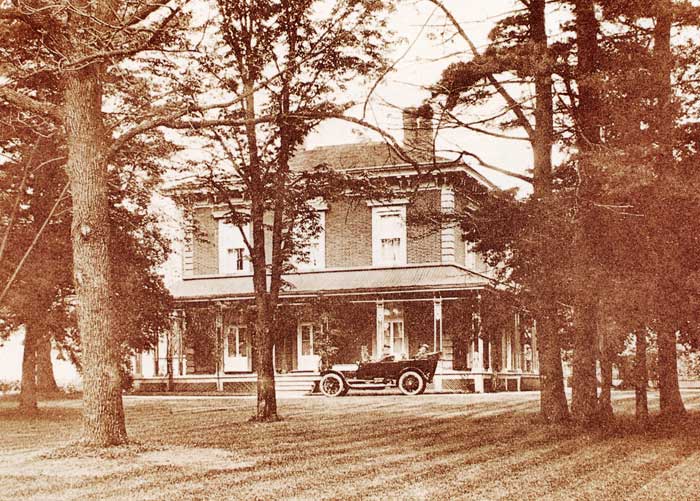
In 1905 the house was sold to the William Davis family. During renovations, the Regency veranda was removed and it again became a family home, now known as Dungannon, owned by the Davis family until the 1950s. It was subsequently sold and divided into apartments until, in 1979, it was restored to a single family residence.
The Taylor Nursing home, a red brick, two storey building on the corner of Eighth Line (Chartwell Rd.) and MacDonald, was operated by Jane Taylor and her husband Frank in the 1930s and 40s. There were six bedrooms used principally for maternity cases although, when available, they were sometimes used for convalescents.
Establishing the Oakville Hospital
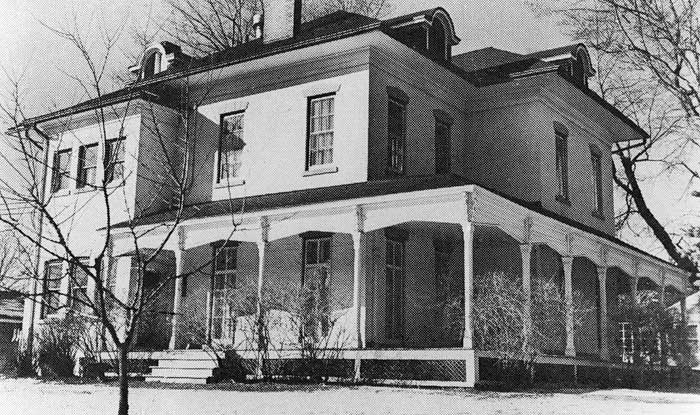
During this period a patient requiring surgery had to be rushed to Toronto. Unfortunately in serious cases the patient might not survive the trip that took over an hour. And so, throughout the war years and immediately after, there was much talk about a hospital for Oakville. In 1944, a group of civic minded citizens banded together to form the Oakville Trafalgar Memorial Hospital Association and raised more than $100,000 to build a new hospital.
However, it was felt that construction costs might come down and that it was inopportune to proceed with building plans. Faced with this delay in getting started, the Lions Club of Oakville spearheaded the growth of hospitalization for the area by forming a committee to establish and run a temporary hospital. Leaders in this project were men such as Sydney G. Fearman and Dr. E.P. Soanes. The Lions purchased the former home of Mr. Christie Armstrong - a partner in Marlatt & Armstrong Leather Company - on First Street for this purpose. They installed an elevator to get supplies from the basement warehouse to the third floor surgery and operated the hospital for almost two years, 1946-48. During that time the fourteen-bed accommodation was constantly overflowing.
Although a significant benefit for the community, there were many features that left much to be desired. The elevator was constantly breaking down, whimpers from the nursery at feeding time could be heard throughout the building and there were no oxygen tents available. And so, in 1948, the Lions Club donated the property to the recently formed Hospital Board.
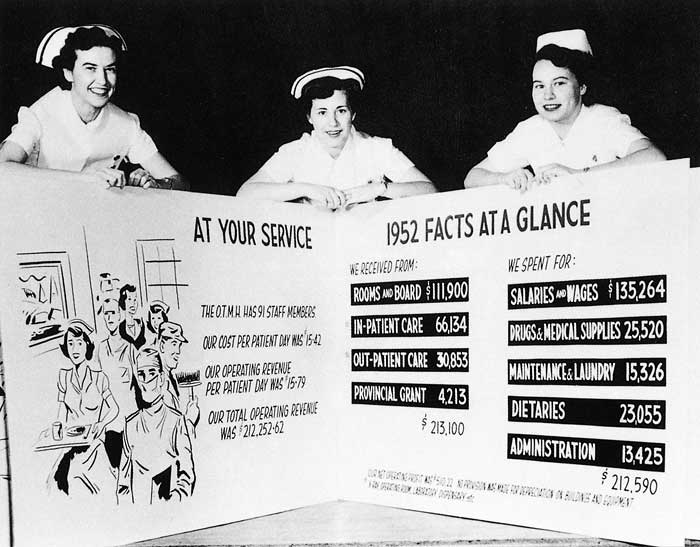
The same year saw the sod-turning ceremony (delayed from 1944) for the Oakville Trafalgar Memorial Hospital that's still serving Oakville. It opened on Feb. 14, 1950 with 50 beds, 13 staff doctors and 13 nurses.
Physicians and Surgeons in Oakville in 1953 :
Dr. W.L.Anderson, Dr. R.D. Appleford, Dr. A.C. Bremner, Dr. D.H. Dixon, Dr. R.N. Hines, Dr. D.S. Kober, Dr. M.E. Lunau, Dr. Campbell MacArthur, Dr. G.K. Phillips, Dr. A. E. Ross, Dr. E.P. Soanes, Dr. F.N. Sparling, Dr. R.W. Wallace, Dr. G.O.Warr, Dr. Bruce Wells, Dr. W.M. Wilkinson, Dr. J.C. Worrell, Dr. J. Zaborowska
Curated by volunteers Mary Noad and Rosemary Seeton.
Much of the textual material is drawn from Hazel Chisholm Matthew's 'Oakville and the Sixteen"
